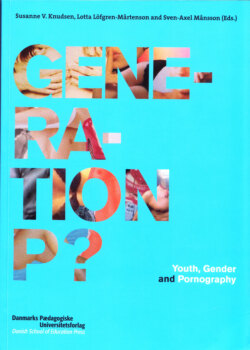Читать книгу Generation P? - Группа авторов - Страница 27
На сайте Литреса книга снята с продажи.
A new-feminist wave in Scandinavia
ОглавлениеDespite the internationalization and globalization of media content, it is important to examine cultural mainstream sexualisation in relation to various national and cultural contexts, as McRobbie does in her analysis of postfeminist, sexualized media representations in Great Britain (McRobbie 2004). Often the Anglo-American context forms a seemingly transparent framing for research in a quite different national, social and cultural context. In contrast to what McRobbie describes as a public dismantling of feminism, there are good reasons to claim that in Scandinavia there is currently a revitalization and re-politicization of feminist issues and a young feminist or new-feminist wave in culture, media and public debate. As a context for the discussion of the reception of the newfeminist anthology Rosa Prosa I want to claim that this Scandinavian new-feminist intervention into culture and politics, along with a relatively extensive welfare state and the Scandinavian tradition of institutionalized gender-equality politics, might give rise to contextually grounded interpretations of mainstream sexualisation that run counter to conclusions about the dismantling of feminism.
McRobbie’s description of Great Britain is actually more comparable to the situation in Scandinavia in the early nineties. After the neo-liberalistic breakthrough in the 1980s, feminism in Scandinavia tended to bee seen as outdated and politically correct. Then, however, a series of new-feminist publications led to a re-politization of feminism (Fiig 2003, Sværke 2005). In Sweden, an antho logy written by young, female writers and journalists, published in 1999 and titled Fittstim (Cunt-stime), gave rise to significant debate in the public media (Skugge et al. 1999). All of a sudden, intellectuals, feminists and politicians were dis cussing the status of feminism and equality in all media channels in Sweden. The cultural trend of Scandinavian new-feminism has parallels as well to postfeminism as third wave feminism.6 The enthusiasm of the young new-feminists turned out to be infectious. In the next couple of years, new-feminist publications were published in Norway and Denmark, leading to intense debates and media attention as has occured in Sweden.7 The media and the cultural field have moved to the very centre of political opinion-making and feminism is a vital matter of interest in public debate especially in Sweden and Norway (Dahlerup 2004). In Norway, the renewal brought on by new-feminism can be seen in book publications, web pages, blogs and press coverage and particularly in the intellectual niche newspapers now read by the intellectual community.8 The cultural periodicals rarely publish an issue that does not touch upon feminism, gender and sexual politics.9 Thus feminism has become substantially re-politicized in the Norwegian public and the political debate.
The paradoxical situation is that this Scandinavian context of re-politization and the vitality and variety of feminist discourses in the mass media have not led to substantially different interpretations of mainstream sexualisation but rather presuppose it to be part of a general feminist backlash tendency. In the Scandinavian context, both research on and debate about mainstream sexualisation seems to be dominated by worries about the consequences for media-content, audience and feminism. Easy access to pornography and sexualization in the media in particular have been regarded as a commercial normalization or ‘mainstreaming’ of pornography. The main focus of researchers and critics has been in line with the Anglo-American perspective of backlash and directed toward actual pornography and representations with pornograghic elements, rather than toward sexualisation as a broad cultural trend. In Scandanavia, the main arguments in the feminist critique and in research are directed at gender-stereotypes and the derogation of pornographization from Scandinavian norms and values regarding gender equality and sexual mutuality (Knudsen & Sørensen 2004, 2006, Sørensen 2003, Højgaard &Sørensen 2004, Hirdmann 2002, 2004).
Don Kulick describes the dominant Scandinavian norms in regard to acceptable sex as
…socially approved, mutually satisfying sexual relations between two (and only two) consenting adults who are more or less sociological equals. It must not involve money or overt domination, even as role-playing. It should occur only in the context of an established social relationship. (Kulick 2005, 208).
One consequence is that in Scandinavia the perspective of backlash dominates, while the perspective of experimentation that is found in Anglo-American research is marginalized in both research and media-debates.
The fact that mainstream sexualization also is both part of and co-producer of conventional power relations tied to gender/androcentrism and sexuality/heteronormativity and that it also contributes to the normalizing of stereotypical discourses is of course a relevant critique, even though it does have a few problems. First, it looks as if, due to the fact that some of the representations are flirting with the generic conventions and aesthetics of pornography, this effects the way we see sexualisation. Second, the backlash argument seems to overlook that in a Scandinavian context mainstream sexualisation exists within a culturally and politically revitalized feminist context. The media-based new-feminism in Scandinavia shows how mainstream sexualisation is being actively interpreted, reinterpreted and politicized.
